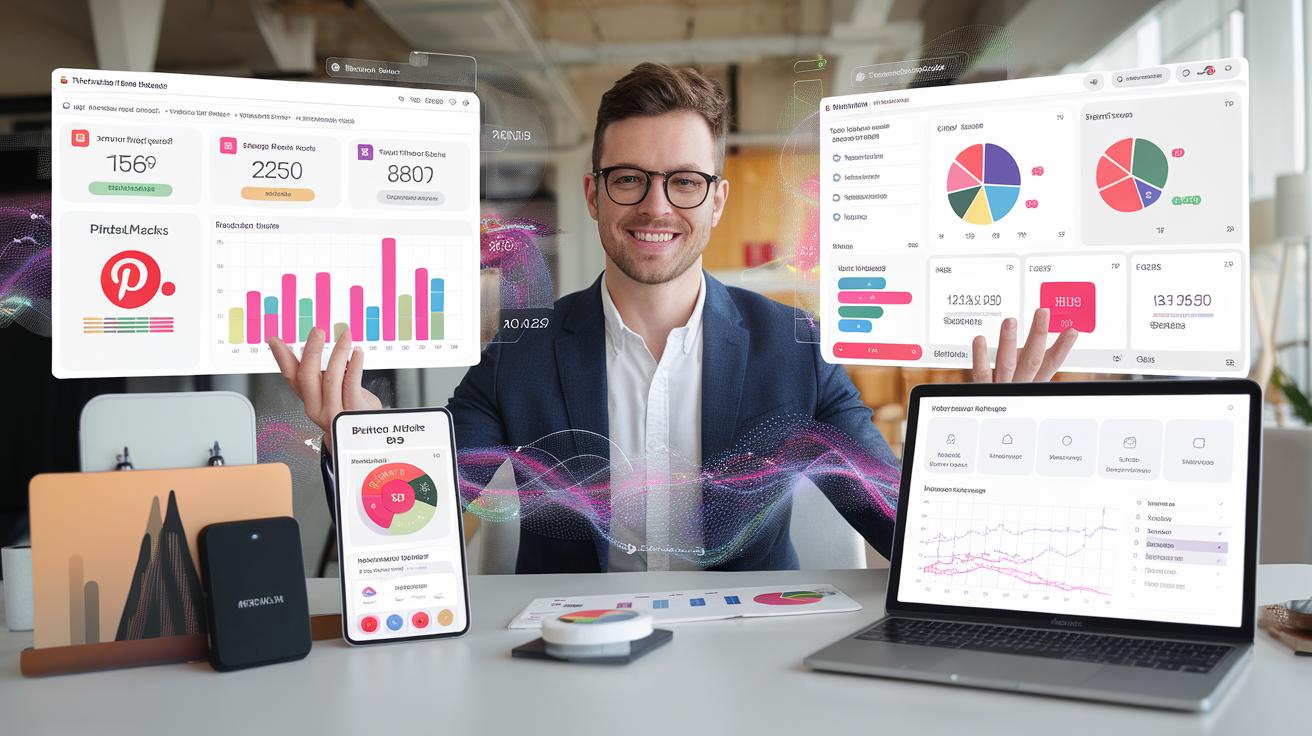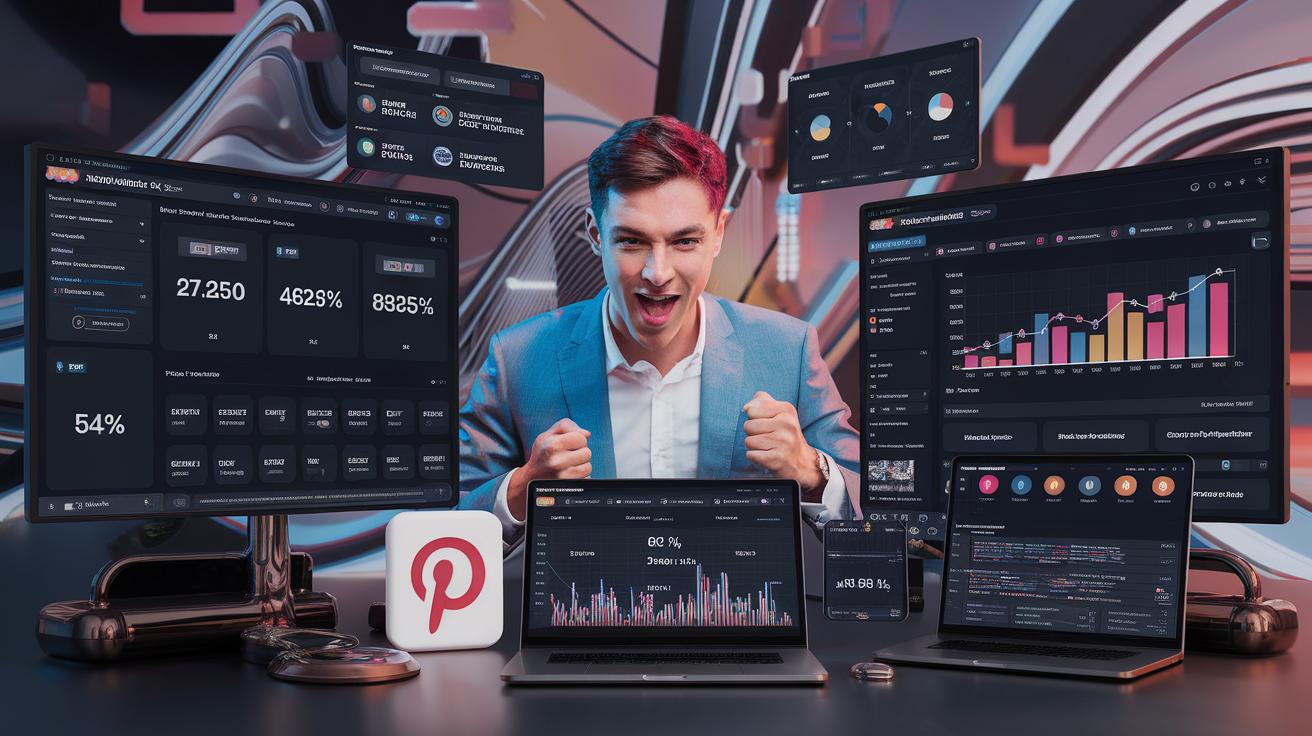Introduction
Pinterest stands out as a unique platform for marketers aiming to engage audiences through visually appealing content. With its image-centric nature, the social media site offers a tremendous opportunity to effectively reach a targeted audience. By understanding the principles of content marketing, businesses can create engaging pins that resonate with their consumers. Focusing on captivating visuals and relatable themes, marketers can utilize content hacks that transform their Pinterest strategy, driving traffic and increasing conversions.
Let’s talk about the nuances of Pinterest marketing and how specific hacks can elevate your brand’s presence. As we explore various techniques, from optimizing pin descriptions to leveraging current trends, we aim to provide practical insights that can be easily implemented. Whether you are a small business owner or a seasoned marketer, these content hacks can enhance your marketing game and foster deeper connections with your audience on Pinterest.
Understanding Pinterest Marketing Explore the Fundamentals of Pinterest Marketing
Pinterest marketing is a unique approach that allows brands to harness the power of visual content to engage and inspire users on a platform dedicated primarily to discovery and planning. Unlike traditional social media channels that emphasize social interaction, Pinterest acts more like a visual search engine, enabling users to search for ideas, products, and inspiration through images or “pins.” This distinguishing characteristic allows Pinterest to serve as a vital tool for brands looking to optimize their content marketing strategies.
The importance of visual content cannot be understated in the realm of Pinterest marketing. The platform thrives on stunning visuals that capture attention and draw users in. In fact, pins that are visually appealing tend to receive higher engagement, resulting in better visibility in user feeds. Quality images not only serve to attract the audience’s attention but also encourage clicks, shares, and saves, which helps brands extend their reach exponentially.
Understanding the platform’s audience is critical to successful marketing on Pinterest. Users typically browse the site with specific intentions—whether that’s planning a wedding, finding home décor inspiration, or seeking recipes. As a result, brands that align their content with the needs and desires of Pinterest users often find untapped potential for audience growth and conversion. For instance, a cooking brand can gain traction by sharing visually stunning food images alongside recipes that inspire users to recreate those dishes.
Another defining feature of Pinterest is the longevity of its content. Unlike other social media platforms where posts quickly fade from visibility, pins can continue to drive traffic long after they are shared. The shelf life of a pin increases significantly, making it a beneficial strategy for brands that aim to create evergreen content that remains relevant over time. This characteristic allows businesses to maximize their efforts by producing fewer high-quality visuals rather than a multitude of short-lived posts.
Effective Pinterest marketing relies on the unique attributes of the platform, emphasizing the power of visual content to connect with users. By creating stunning, relevant images that resonate with target audiences, brands can harness Pinterest’s unique potential to enhance their marketing strategies and drive lasting engagement.
Content Creation Strategies Types of Content that Perform Well on Pinterest
On Pinterest, certain types of content consistently achieve high engagement and resonate deeply with users. Infographics, how-to guides, and beautifully crafted images stand at the forefront, driving traffic and enhancing brand visibility. Understanding the nuances of these content forms can transform your Pinterest marketing strategy and lead to significant results.
Infographics: Maximize Information in a Visual Format
Infographics excel on Pinterest primarily because they condense complex information into an easily digestible and visually appealing format. By combining images, text, and data, infographics allow users to grasp intricate topics quickly. When creating infographics, focus on originality and clarity—your design should not just be pretty but also informative. Using brand colors and fonts can foster recognition, ensuring that when users save or share your infographic, they remember your brand.
How-to Guides: Empower Users with Step-by-Step Instructions
Another type of effective content is the how-to guide. These posts cater to Pinterest users seeking inspiration or solutions, making them prime candidates for organic growth. Ensure that your guides are actionable and easy to follow. Break down complex processes into simple steps and use visuals to illustrate every stage of the journey. This not only aids comprehension but also enhances the likelihood of re-shares across the platform, as users appreciate content that simplifies tasks or solves problems.
Visually Appealing Images: The Heart of Pinterest
The cornerstone of Pinterest lies in its visual content, but not every image is created equal. High-resolution, compelling images that tell a story or evoke a feeling perform significantly better than average snapshots. Consider employing a consistent style that aligns with your brand identity—this could be a specific color palette or unique photography style. The goal is to create a cohesive look that not only captivates viewers but also establishes your brand presence on Pinterest.
In this visually-driven platform, quality supersedes quantity. Original, high-caliber content is more likely to be shared, saved, and reposted by users, amplifying your reach and engagement. By investing time and creativity into your content creation, you can set your brand apart in the competitive Pinterest landscape.
Leveraging Trends and Seasonal Content Revolutionize Your Pinterest Marketing Strategy
Tapping into Trends and Themes
Pinterest marketing harness trends and seasonal content serves as a powerful content hack that can significantly amplify your visibility and engagement. By aligning your pins with current trends and seasonal themes, you position your brand as relevant and timely. This strategic approach not only attracts more eyes to your content but also enhances your chances of being repinned, favorited, and engaged with by users on the platform.
Monitoring platforms like Google Trends, Pinterest Trends, and social media buzz can provide invaluable insights into what is currently captivating audiences. For example, during the holiday season, users flock to Pinterest in search of festive ideas, such as gift guides, decoration tips, and recipes. Crafting content centered around these trending topics can position your pins for maximum exposure. Think of creative and unique angles: rather than a simple holiday recipe pin, consider infographics that combine seasonal recipes with innovative cooking hacks.
Creating Seasonal Content for Increased Engagement
Seasonal content goes beyond merely recognizing yearly holidays; it encompasses the rhythm of consumer behavior associated with different times of the year. By crafting content tailored to specific seasons—such as back-to-school, summer travel, or autumn crafts—you capture the attention of individuals who are actively seeking inspiration for those themes. This relevance encourages users to engage more deeply with your content, resulting in better click-through rates and conversions.
It is valuable to build a year-round content calendar that highlights key seasonal opportunities. Some examples of seasonal themes include:
- Spring cleaning tips and organization hacks
- Summer travel itineraries and packing checklists
- Fall decor ideas and Halloween inspiration
- Winter holiday preparations and New Year resolutions
Leveraging the Pinterest Analytics tool can help you discover which seasonal themes resonate most with your audience. By analyzing past performance, you can refine your content strategy to ramp up engagement on future seasonal campaigns. Ultimately, staying on-trend not only improves your visibility on the platform but also fosters a stronger connection with your audience, as they appreciate your role in helping them navigate their seasonal aspirations. This organic interaction paves the way for increased brand loyalty, seamlessly setting the stage for the community building strategies addressed in the following chapter.
Engagement and Community Building Strategies for Enhancing Your Pinterest Marketing Strategy
Connecting with the Pinterest Community
To truly capitalize on Pinterest as a marketing tool, successful brands must go beyond merely displaying their products. Engaging with the Pinterest community fosters loyalty and drives awareness. Authentic interaction starts by consistently responding to comments, acknowledging user-generated content, and weaving personal narratives into your posts. This approach humanizes your brand and encourages followers to feel a genuine connection. When users see that their contributions matter, they are more likely to re-pin, share, and create a dialogue around your content.
Utilizing Pinterest’s distinct features can amplify these engagement efforts. For instance, creating collaborative boards invites others to contribute, generating a sense of belonging and investment in the board’s theme. The act of collaborating not only diversifies content but also attracts diverse audiences. Engaging directly within your niche community is a powerful way to cultivate dedicated followers who become ambassadors for your brand.
Building a Loyal Community
Establishing a sense of community extends beyond interaction—it involves creating a space where your audience feels valued and understood. Sharing resources like tips, tutorials, and relevant articles positions your brand as a valuable source of knowledge. It fosters an ecosystem where followers not only consume content but also participate and contribute ideas. By doing so, brands solidify their role as thought leaders in their respective niches.
Another strategy is hosting Pinterest contests or challenges that encourage user participation. For example, prompting users to pin their favorite recipes or DIY projects can generate excitement and interaction. This not only enhances visibility through shares and re-pins but also creates a vibrant atmosphere where creativity flourishes. As users share their entries, they spread awareness of your brand far beyond your immediate audience, thereby increasing your reach.
Above all, the key to successful engagement and community building lies in consistency. Frequencies of posting, interaction, and visible appreciation of user engagement set a tone that encourages ongoing participation. As brand narratives evolve, remaining connected with followers through storytelling and valuable content will solidify trust and drive long-term loyalty.
Analyzing Performance and Making Adjustments Leveraging Metrics for Pinterest Marketing
Harnessing the power of Pinterest for marketing requires a keen understanding of how your content performs on the platform. Analyzing performance metrics is essential to refining your strategies and ensuring that your efforts translate into tangible results. Without a thorough assessment of what works and what doesn’t, marketing initiatives may lack direction and miss opportunities for optimization.
Understanding Pinterest Analytics Tools
To effectively analyze your performance, it’s important to utilize the variety of analytics tools available. Pinterest provides built-in analytics that grants insights into how your Pins are performing. This tool allows marketers to track impressions, clicks, and saves for individual Pins, as well as engagement trends over time. Beyond the basic metrics, these analytics can highlight which audience segments engage with your content more frequently.
In addition to the native analytics tools, there are third-party platforms designed specifically for Pinterest marketing. Tools like Tailwind focus on not just analytics but also on scheduling and optimizing Pins. They provide in-depth reports on your top content, the best times to post, and audience growth, making it easier to adapt your strategy based on solid data.
Analyzing metrics should not be a one-time endeavor, but rather an ongoing process. Keeping an eye on trends can signal when adjustments are necessary. For example, if certain types of content lead to higher engagement and conversions, consider creating more content in that vein or experimenting with variations of it. Similarly, noticing a drop in engagement can prompt a reassessment of your content strategy, visuals, or target audience.
Utilizing Insights to Refine Strategies
Understanding the nuances of your analytics can empower businesses to tailor their marketing strategies significantly. For instance, if analytics show that video Pins capture more attention compared to static images, it may be beneficial to increase video content production. Conversely, if a specific demographic yields high engagement, focusing on content that resonates with that audience can improve marketing efficiency.
The key to success on Pinterest lies in the data. By diligently analyzing performance metrics and applying insights to refine content strategy, marketers can enhance their overall effectiveness on the platform, thus ensuring their efforts yield the highest possible returns. This approach paves the way for integrating Pinterest marketing with broader digital efforts, creating a cohesive marketing strategy that resonates across channels.
Integrating Pinterest with Other Marketing Platforms
Cohesive Digital Strategy for Effective Content Marketing
Digital marketing create a cohesive strategy across multiple platforms and is vital for maximizing reach and engagement. Integrating Pinterest marketing with other channels can significantly enhance brand visibility and drive traffic. The combination of Pinterest with social media, email marketing, and your website can create a robust marketing ecosystem that draws customers from different touchpoints.
Utilizing social media platforms such as Facebook, Instagram, and Twitter allows brands to share their Pinterest content widely. For instance, by promoting your Pinterest boards or specific pins on these platforms, you can direct your existing audience toward your Pinterest profile. Scheduled posts about your Pinterest content can also keep your followers engaged, driving them to explore more of your visual content. In doing so, brands should ensure they adapt visuals and messages to fit each platform’s unique tone to maintain relevance.
Email marketing serves as another powerful tool for Pinterest integration. Leveraging curated email newsletters with links to popular Pinterest boards or seasonal pin promotions can entice subscribers to discover your Pinterest offerings. This strategy not only promotes your Pinterest content but also encourages customer interaction directly within their inbox, creating a seamless transition from email to Pinterest.
Your website should include ‘Pin It’ buttons on images and blog posts, allowing visitors to easily share your content on Pinterest. This action encourages user-generated content and expands your reach as followers share your visuals with their networks. With compelling visuals and strategic keywords in descriptions, your website content can rank well in Pinterest search results, bringing additional traffic from the platform itself.
Multi-channel marketing fosters an interconnected brand presence that can enhance customer loyalty. By creating campaigns that resonate across all platforms, businesses can guide customers on a journey from initial awareness on social media to deeper engagement on Pinterest. This approach allows for continuous brand storytelling, captivating audiences through varied mediums and ensuring your message remains consistent.
As marketing trends evolve, capturing new opportunities for integration will be pivotal. Whether it’s through dynamic social media ads or responsive email campaigns, a well-planned strategy that integrates Pinterest holds the potential to revolutionize your overall approach to digital marketing. It positions your brand to leverage the strengths of each platform while driving a consistent narrative that captivates and converts your target audience.
The Future of Pinterest Marketing Exploring Emerging Trends and the Growing Landscape
The Shift Toward Video Content
As the digital marketplace continues to evolve, Pinterest is increasingly leaning towards dynamic content forms, with video content leading the way. With the platform’s focus on immersive experiences, video pins have gained significant traction among users. These engaging snippets not only capture attention but also enhance storytelling for brands, allowing them to convey more than static images ever could. Data has shown that video content can boost engagement rates, effectively making Pinterest a multimedia platform rather than simply a visual one.
Incorporating short-form videos, such as tutorials, behind-the-scenes glimpses, and quick, captivating visuals, is becoming standard practice for successful brands. Users are naturally drawn to content that feels more personal and relatable, which videos can offer. Hence, marketers who optimize their content strategy by integrating video into their pinning practices can expect a notable increase in user interaction and brand visibility, ultimately leading to higher conversion rates.
Embracing E-commerce Integration
The integration of e-commerce into Pinterest is another revolutionary trend shaping the future of marketing on the platform. Pinterest is gradually becoming a visual search engine that not only inspires users but also facilitates purchases directly. The advent of features like Shop the Look and product tagging has made it easier for users to discover items they love and make quick purchases without leaving the platform. This streamlined user experience fosters a synergy between inspiration and action that is highly beneficial for brands.
Marketers can leverage this trend by ensuring their pins include rich product information, seamless linking to online shops, and visually appealing graphics aligned with their brand aesthetic. This approach targets users who are in the mindset of buying rather than merely browsing. As the e-commerce landscape continues to expand, Pinterest stands out as a vital player in converting user intent into sales, especially for visually-focused products such as home decor, fashion, and beauty.
Understanding these emerging trends is instrumental for brands looking to cultivate a successful Pinterest marketing strategy. With video content reinvigorating user engagement and e-commerce integration presenting fresh opportunities for direct sales, the future of Pinterest marketing is brighter than ever. Adapting to these trends will not only enhance brand visibility but also create meaningful connections with audiences eager for inspiration and shopping convenience.
Conclusions
Optimizing content on Pinterest requires a thoughtful approach that emphasizes creativity and consumer engagement. By implementing the content hacks discussed, marketers can create a cohesive strategy that not only showcases their brand but also fulfills the informational needs of their target audience. Crafting visually compelling content alongside SEO-rich descriptions allows for greater visibility within this dynamic platform.
As Pinterest continues to evolve, the ability to adapt content strategies with fresh, meaningful hacks will remain crucial for success. These insights not only assist in maximizing reach but also help in establishing a loyal community around your brand. Embrace these techniques and watch your Pinterest marketing reimagine itself, pulling in traffic that converts.

















